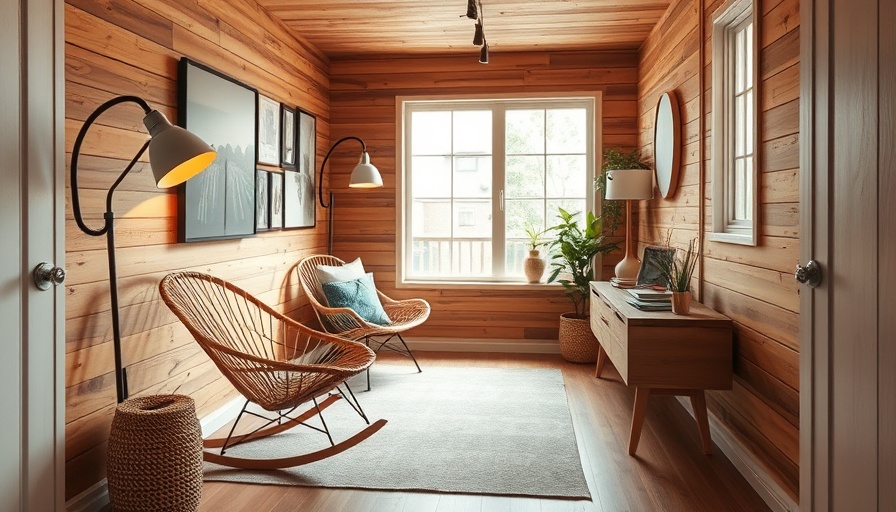
Transforming Small Spaces: Embracing the Challenge
Living in Brooklyn means embracing its unique beauty and charm, but it also comes with its challenges, especially when it comes to space. Many homeowners here often find themselves facing the task of optimizing their small basements. These spaces, typically underestimated, can transform into functional areas with the right approach and design ideas. This guide explores practical tips and innovative layouts that can turn your basement into a functional oasis of creativity and utility.
Creative Design Solutions for Every Basement
The heart of maximizing functionality in a basement lies in creativity. Small basements may feel cramped, but they offer boundless opportunities for innovative design. Consider incorporating open-plan layouts that emphasize flexibility. For instance, multifunctional furniture like convertible sofas, foldable desks, or ottomans with hidden storage can adapt to your changing needs without cluttering the space. This adaptability is crucial for a basement that might serve multiple purposes—be it a home office during the day and a cozy den at night.
Color palettes can significantly influence how spacious a basement feels. Lighter colors naturally enhance and reflect light, creating an illusion of depth, while darker colors may hinder space perception. Homeowners can amplify the openness of their basements by incorporating mirrors, strategic lighting fixtures, and adequate placements that foster a fluid sense of movement within the space. The aim is to ensure that a basement doesn’t feel cut off from the rest of the home; instead, it should reflect an extension of one’s living experience.
Maximizing Vertical Space: Building Up Instead of Out
When contemplating layouts for small basements, it's vital to rethink how you utilize available space. With floor real estate at a premium, reaching for the vertical dimension can unlock substantial storage options. Installing tall shelves or built-in units that extend from the floor to the ceiling not only offers effective storage solutions but also adds an aesthetic appeal that can showcase decorative items or personal memorabilia. Additionally, using wall hooks to hang bicycles or ladders can clear the floor, making the area feel larger and more open.
Functional Zones: Defining Multiple Spaces
Creating designated zones within your basement can enhance its utility significantly. Homeowners can define areas for work, fitness, or relaxation easily through clever design elements such as rugs, partition walls, or furniture arrangements. For example, a small exercise area can be crafted in one corner with a yoga mat and gym equipment hidden away when not in use. Meanwhile, the opposite side might be transformed into a reading nook with a cozy chair and lit by warm, inviting lights, perfect for kicking back after a long day.
Lighting: Brightening Up Your Basement Space
No matter how well you design your basement, poor lighting can turn a potentially beautiful space into a gloomy hole. Introducing multiple lighting sources—overheads, wall sconces, and table lamps—can dramatically impact the vibe of the area. Adjustable lighting allows you to create different moods during the day and help the basement feel more alive. Moreover, installing light fixtures in mirror-reflective setups can enhance brightness, making the space feel inviting.
Inspiration From Brooklyn: Unique Local Design Trends
Looking at successful examples around Brooklyn can provide added inspiration for homeowners. Many have turned to reclaimed materials to add character to their spaces, embracing the local aesthetic. Reclaimed wood for shelves or fixtures not only adds warmth but resonates with Brooklyn’s design ethos. Moreover, collaborating with local artists to create wall murals can infuse personality and art into your basement, making it a space that reflects your individual style.
Practical Tips for Your Basement Transformation
When embarking on a basement makeover, keeping it practical is essential. Start by mapping out your basement space, using blueprints or paper to conceptualize layouts before any renovations begin. Prioritize finding solutions that will accommodate your lifestyle—if the space is meant for family gatherings, focus on a more open design, while a workspace can benefit from dedicated sections. Additionally, remember to abide by zoning and legal requirements, ensuring your renovation complies with local regulations.
Conclusion: Creating Your Dream Basement
With careful planning and creativity, the basement can transcend its usual stereotype as a dark, forgotten underbelly of the home. Instead, it can become a vibrant part of the living space that beautifully blends functionality and style. As Brooklyn homeowners explore the possibilities in their small basements, the neighborhoods’ inventive spirit can shine through, transforming these spaces into valuable extensions of their homes.
Embrace the challenge of your basement and let it reflect your unique lifestyle! Whether you aim to create a cozy reading nook, a lively game room, or a productive home office, the potential is within your reach. For those ready to start their journey in basement transformation, consider exploring local designers and contractors who specialize in creative and practical solutions tailored to your needs.
 Add Row
Add Row  Add
Add 




 Add Row
Add Row  Add
Add 

Write A Comment